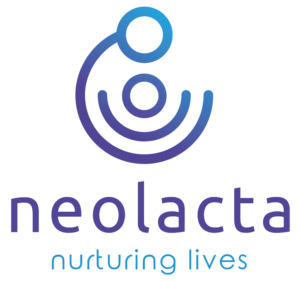Preemie nutrition refers to the specialized dietary needs and feeding strategies designed for preterm infants, born before 37 weeks of gestation. These infants often have unique nutritional requirements due to their premature birth and incomplete development of organs, particularly the digestive and respiratory systems.
The importance of specialized nutrition for preterm infants cannot be overstated. Preemies have increased nutritional needs to support their rapid growth and development outside the womb. They may struggle with immature digestive systems, making it challenging for them to process regular infant formulas or breast milk. Specialized preemie formulas are carefully formulated to meet the specific nutritional demands of these infants, addressing their higher energy expenditure, enhanced protein needs, and nutrient absorption challenges.
Providing adequate and appropriate nutrition for preterm infants is crucial for promoting optimal growth, immune system development, and overall well-being. The right balance of nutrients, vitamins, and minerals is essential for supporting their catch-up growth and preventing complications associated with prematurity. Healthcare professionals closely monitor preemie nutrition to customize feeding plans, ensuring that these vulnerable infants receive the tailored support they need for a healthy start in life.
Benefits of Breast Milk for Preemies
Breast milk offers numerous unique benefits for preterm infants, providing a critical source of nutrition and support for their fragile health and development. Here are some key advantages:
Immune Support:
Antibodies and Immunoglobulins: Breast milk contains antibodies and immunoglobulins that help boost the preterm infant’s immune system, providing protection against infections and illnesses.
White Blood Cells: Breast milk is rich in white blood cells, further enhancing the infant’s ability to fight off infections.
Nutrient Composition:
Tailored Nutrition: The composition of breast milk changes dynamically to meet the evolving needs of preterm infants, adapting to their developmental stages.
Highly Digestible: Breast milk is easily digestible, reducing the strain on the immature digestive systems of preterm babies.
Growth and Development:
Optimal Brain Development: Breast milk is associated with improved neurodevelopmental outcomes, supporting the development of the preterm infant’s brain and nervous system.
Digestive System Maturation: Components in breast milk aid in the maturation of the infant’s gastrointestinal tract, promoting better nutrient absorption and digestion.
Reduced Risk of Infections and Diseases:
Lower Incidence of Necrotizing Enterocolitis (NEC): NEC is a serious gastrointestinal condition common in preterm infants. Breast milk has been shown to reduce the risk of NEC.
Fewer Respiratory Infections: Preemies who receive breast milk are less likely to develop respiratory infections compared to those fed with formula.
Psychosocial Benefits:
Bonding and Comfort: Breastfeeding promotes a strong bond between the mother and preterm infant, providing comfort and emotional support crucial for their well-being.
Gut Microbiota:
Promotion of Healthy Gut Flora: Breast milk supports the establishment of a healthy gut microbiota, which plays a crucial role in the infant’s immune function and overall health.
Reduced Risk of Allergies and Asthma:
Protective Factors: Breast milk contains protective factors that may reduce the risk of allergies and asthma in preterm infants.
In summary, the unique composition of breast milk provides preterm infants with a multitude of benefits, ranging from immune support to optimal developmental outcomes. The dynamic nature of breast milk makes it a crucial resource in the care and nurturing of these vulnerable infants, contributing significantly to their short-term and long-term health.
Breastfeeding Challenges for preemies
Breastfeeding preterm infants can present various challenges due to their premature birth and the associated developmental immaturity. Overcoming these challenges requires patience, support, and sometimes specialized strategies. Here are common challenges faced by preterm infants during breastfeeding and practical tips for overcoming them:
Latching Difficulties:
Preterm infants may have weak sucking reflexes and difficulty latching onto the breast.
- Use breast shields to assist with latching.
- Provide a calm and quiet environment to reduce stress during feeding.
- Seek guidance from a lactation consultant for personalized assistance.
Preemies may struggle with a weak or uncoordinated sucking reflex, making it challenging to extract milk efficiently.
- Use breast compressions during feeding to encourage milk flow.
- Consider using a breast pump to express milk and supplement feedings if needed.
Preterm infants may develop aversions to oral stimulation due to medical interventions and tube feeding experiences.
- Gradually introduce oral stimulation with a pacifier or a finger.
- Work with healthcare professionals to develop a gradual oral feeding plan.
Mothers of preterm infants may initially experience challenges in establishing a full milk supply.
- Practice frequent and effective pumping sessions to stimulate milk production.
- Utilize skin-to-skin contact (kangaroo care) to enhance milk production.
- Stay well-hydrated and maintain a balanced diet.
Preterm infants may tire easily during breastfeeding due to their limited energy reserves.
- Optimize the timing of breastfeeding sessions when the infant is most alert.
- Allow for shorter, more frequent feedings to prevent exhaustion.
Preemies who received tube feedings may find it challenging to transition to breastfeeding.
- Gradually introduce breastfeeding, starting with short sessions and increasing as the infant becomes more proficient.
- Seek guidance from healthcare professionals on a gradual weaning plan from tube feedings.
Achieving successful breastfeeding may take time, and setbacks are common.
- Be patient and persistent, acknowledging that progress may be gradual.
- Seek emotional support from healthcare professionals, support groups, or family members.
Remember, individual challenges vary, and seeking guidance from a lactation consultant or healthcare provider is crucial for personalized advice. The key is to approach breastfeeding preterm infants with flexibility, adaptability, and a focus on the unique needs of both the infant and the mother.
Pumping breast milk is of paramount significance for preterm infants, offering numerous benefits that contribute to their health and development. Here’s a discussion on the importance of pumping for preemies and guidance on establishing and maintaining a pumping routine, along with tips for maximizing milk production:
Significance of Pumping for Preemies
Nutritional Support:
Pumping allows mothers to provide breast milk even if direct breastfeeding is initially challenging for preterm infants. This ensures they receive the optimal nutrition required for their unique developmental needs.
Immune Support:
Pumped breast milk contains antibodies and immunoglobulins that help boost the preterm infant’s immune system, providing protection against infections and illnesses.
Gut Health:
Pumped breast milk supports the establishment of a healthy gut microbiota, which is crucial for preterm infants’ digestive health and overall well-being.
Developmental Benefits:
Breast milk obtained through pumping is associated with improved neurodevelopmental outcomes, contributing to optimal brain development in preterm infants.
Establishing and Maintaining a Pumping Routine
Early Initiation:
Begin pumping as soon as possible after birth, ideally within the first few hours. Early initiation helps stimulate milk production and establishes a good milk supply.
Frequent Pumping Sessions:
Pump at least 8-12 times a day, mimicking the natural feeding frequency of a newborn. Frequent pumping signals the body to produce more milk.
Consistency:
Establish a consistent pumping routine, including pumping during the night to maintain a steady milk supply.
Effective Pumping Techniques:
Ensure a proper fit of breast shields to maximize milk extraction.
Use a hospital-grade, double electric breast pump for efficient and effective pumping sessions.
Hands-On Pumping:
Incorporate hands-on pumping techniques, such as breast compressions or massage during pumping, to increase milk flow.
Hydration and Nutrition:
Stay well-hydrated and maintain a balanced diet to support milk production. Adequate hydration is essential for optimal milk supply.
Relaxation Techniques:
Create a calm and relaxing environment during pumping to encourage let-down. Relaxation can positively impact milk production.
Tips for Maximizing Milk Production
Skin-to-Skin Contact:
Engage in skin-to-skin contact (kangaroo care) with your preterm infant, as it can enhance milk production.
Pump After Breastfeeding:
If attempting direct breastfeeding, pump after each breastfeeding session to fully empty the breasts and signal increased milk production.
Power Pumping:
Incorporate power pumping sessions, where you pump for shorter, more frequent intervals, to simulate cluster feeding and boost milk supply.
Galactagogues:
Consider herbal supplements or medications known as galactagogues, but consult with a healthcare professional before using them.
Remember that establishing a pumping routine and maximizing milk production may take time and patience. Seeking support from a lactation consultant, joining breastfeeding support groups, and communicating with healthcare providers can provide valuable guidance tailored to individual needs.
Fortifying breast milk for preemies
Fortifying breast milk for preemies involves enhancing its nutritional content to meet the specific needs of these vulnerable infants. Premature babies often require additional nutrients, particularly protein, calories, and minerals, to support their rapid growth and development. Fortifiers, which can be in the form of powdered or liquid supplements, are added to breast milk to achieve the desired nutrient levels.
Role of Fortifiers and Impact on Nutritional Content
Caloric and Protein Enhancement:
Fortifiers increase the caloric and protein content of breast milk, ensuring preterm infants receive the necessary energy and nutrients for optimal growth.
Mineral Supplementation:
Fortifiers may include essential minerals such as calcium and phosphorus, crucial for bone development in preemies who may have increased needs.
Vitamin Enrichment:
Some fortifiers may include additional vitamins, supporting the overall nutritional requirements for preterm infants.
Individualized Approach:
Fortification is often tailored to the specific needs of the infant, and adjustments are made based on regular assessments of growth, developmental milestones, and nutritional requirements.
Monitoring Growth and Development for Preemies:
Importance of Regular Check-ups:
Regular check-ups are essential for monitoring the growth and development of preterm infants. Healthcare providers closely track weight gain, length, and head circumference to assess overall progress.
Assessment of Preemie Development:
Healthcare providers use developmental screening tools to assess milestones in areas such as motor skills, cognitive function, and social-emotional development.Adjustments to nutritional plans are made based on the infant’s growth patterns and developmental progress.
Emotional Aspects of Preemie Nutrition for Parents:
Acknowledging the Emotional Journey:
Parents of preemies often experience a unique and emotional journey related to their infant’s nutrition. The challenges of breastfeeding, pumping, and navigating the complex landscape of preemie care can be overwhelming.
Supportive Environment:
Establishing a supportive environment is crucial, involving communication with healthcare providers, lactation consultants, and support groups.
Communication with Healthcare Providers:
Encourage open communication between parents and healthcare providers. Regular updates on the infant’s progress, concerns, and any challenges with feeding help ensure a collaborative approach to preemie nutrition.
Celebrate Milestones:
Celebrate the achievements and milestones, no matter how small. Each developmental step and successful feeding session contribute to the preemie’s overall well-being and signify progress.
In summary, fortifying breast milk, monitoring growth and development, and acknowledging the emotional aspects of preemie nutrition are integral components of providing comprehensive care for preterm infants. Collaborative efforts involving healthcare providers and emotional support for parents contribute to the best practices.
References
- Spatz DL, Froh EB, Schwarz J, et al. Pump Early, Pump Often: A Continuous Quality Improvement Project. J Perinat Educ. 2015;24(3):160-170. doi:10.1891/1058-1243.24.3.160
- Underwood MA. Human milk for the premature infant. Pediatr Clin North Am. 2013;60(1):189-207. doi:10.1016/j.pcl.2012.09.008
- Buckley, K.M., Charles, G.E. Benefits and challenges of transitioning preterm infants to at-breast feedings. Int Breastfeed J 1, 13 (2006). https://doi.org/10.1186/1746-4358-1-13
- Gu X, Shi X, Zhang L, et al. Evidence summary of human milk fortifier in preterm infants. Transl Pediatr. 2021;10(11):3058-3067. doi:10.21037/tp-21-476




